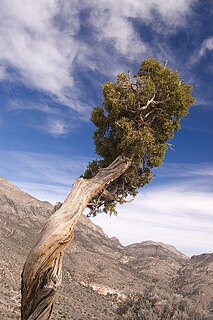
Junipers are coniferous trees and shrubs in the genus Juniperus of the cypress family Cupressaceae. Depending on taxonomic viewpoint, between 50 and 67 species of junipers are widely distributed throughout the Northern Hemisphere, from the Arctic, south to tropical Africa, from Ziarat, Pakistan, east to eastern Tibet in the Old World, and in the mountains of Central America. The highest-known juniper forest occurs at an altitude of 16,000 ft (4,900 m) in southeastern Tibet and the northern Himalayas, creating one of the highest tree-lines on earth.

The Tortricidae are a family of moths, commonly known as tortrix moths or leafroller moths, in the order Lepidoptera. This large family has over 10,350 species described, and is the sole member of the superfamily Tortricoidea, although the genus Heliocosma is sometimes placed within this superfamily. Many of these are economically important pests. Olethreutidae is a junior synonym. The typical resting posture is with the wings folded back, producing a rather rounded profile.

Aethes rutilana, the pale juniper webworm, is a moth of the family Tortricidae. It was described by Jacob Hübner in 1817. It is found in the whole of Europe and North America.

The juniper webber is a moth of the family Gelechiidae. It is found in Europe.
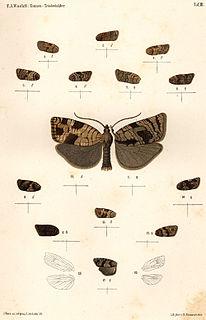
Choristoneura murinana is a moth of the family Tortricidae. It is found in central Europe and the Near East, China, Taiwan and in North America.
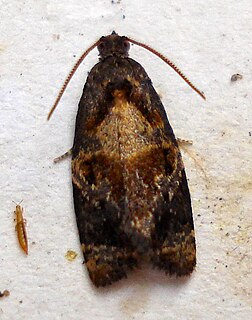
Ditula angustiorana, the red-barred tortrix, is a moth of the family Tortricidae. It is found from Sweden to the Iberian Peninsula and Italy, and from Ireland to Slovenia. Other common names are fruit-tree tortrix and vine tortrix.
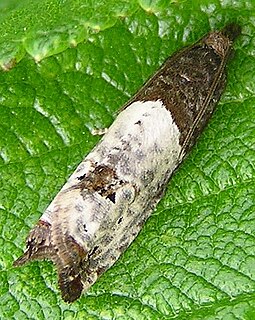
Notocelia roborana is a moth of the family Tortricidae. It is found from Europe to eastern Russia. It is also found in Asia Minor, Iran, Mongolia and China (Xinjiang).

Notocelia cynosbatella is a moth of the family Tortricidae. It is found from Europe to eastern Russia, it is also found in Asia Minor, Iran, Kazakhstan, China and Mongolia.

Rhyacionia pinivorana, the spotted shoot moth, is a moth of the family Tortricidae. It is found from northern and central Europe to eastern Russia, China, Korea and Japan.
Cydia cosmophorana is a moth of the family Tortricidae. It is found from northern and central Europe to eastern Russia.

Cydia duplicana is a small moth of the family Tortricidae. It is found in all across Europe, extending barely into Asia in the Transcaucasus, Turkestan and Kazakhstan.
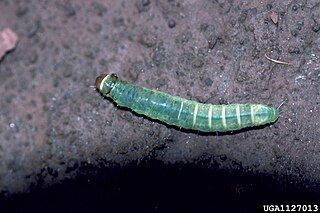
The omnivorous leafroller is a moth of the family Tortricidae. It is found in Mexico and the United States in California, Arizona, Texas, Florida and Hawaii.
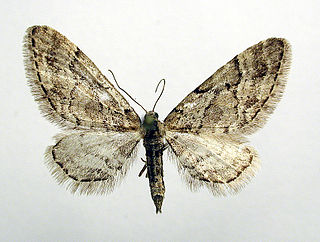
Eupithecia lanceata is a moth of the family Geometridae. It is known from most of the Palearctic realm, except for the south. The habitat consists of pine forests.

Epinotia radicana, the red-striped needleworm moth, is a species of moth of the family Tortricidae. It is found in western Canada, including British Columbia and the Alberta.
Henricus infernalis is a species of moth of the family Tortricidae. It is found in North America from Texas to Arizona, north to Utah, eastern British Columbia and Nebraska. The habitat consists of juniper woodlands.
Archepandemis coniferana is a species of moth of the family Tortricidae first described by Akira Mutuura in 1978. It is found in North America, where it has been recorded from Alberta, British Columbia and California. The habitat consists of coniferous forests.
Argyrotaenia cupressae is a species of moth of the family Tortricidae. It is found in the United States, where it has been recorded from California.
Argyrotaenia paiuteana is a species of moth of the family Tortricidae. It is found in the United States, where it has been recorded from California.

Cudonigera houstonana, the juniper budworm moth, is a species of moth of the family Tortricidae. It is found in North America, where it has been recorded from Arizona, California, Kansas, Mississippi, New Hampshire, New Jersey, New Mexico, North Carolina, Oklahoma, Tennessee and Texas.
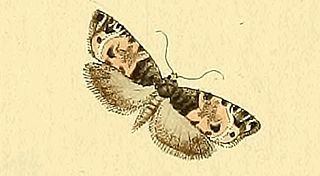
Notocelia incarnatana, the chalk rose bell, is a species of moth of the family Tortricidae. It is found in China, Mongolia, Japan, Russia, Kazakhstan and Europe, where it has been recorded from most of the continent, except parts of the Balkan Peninsula.















